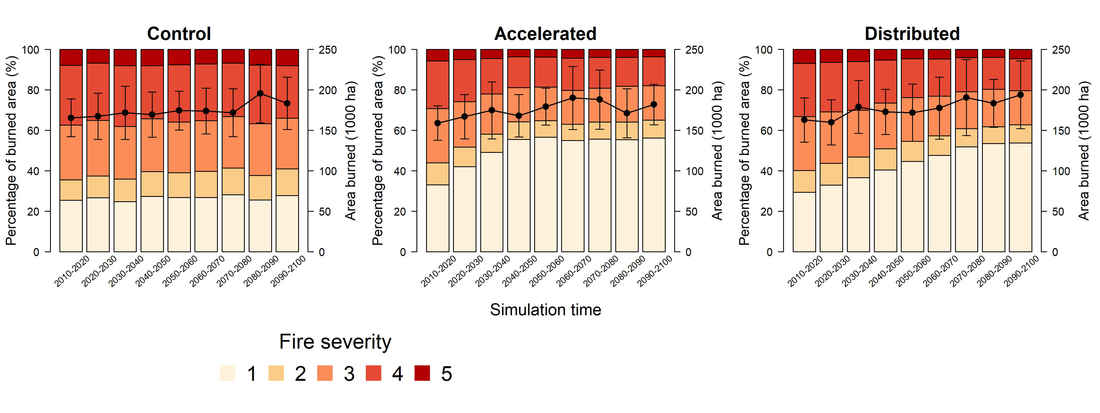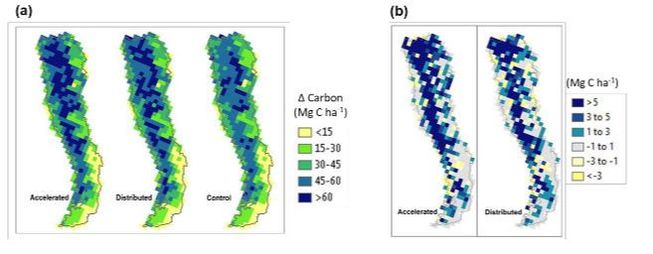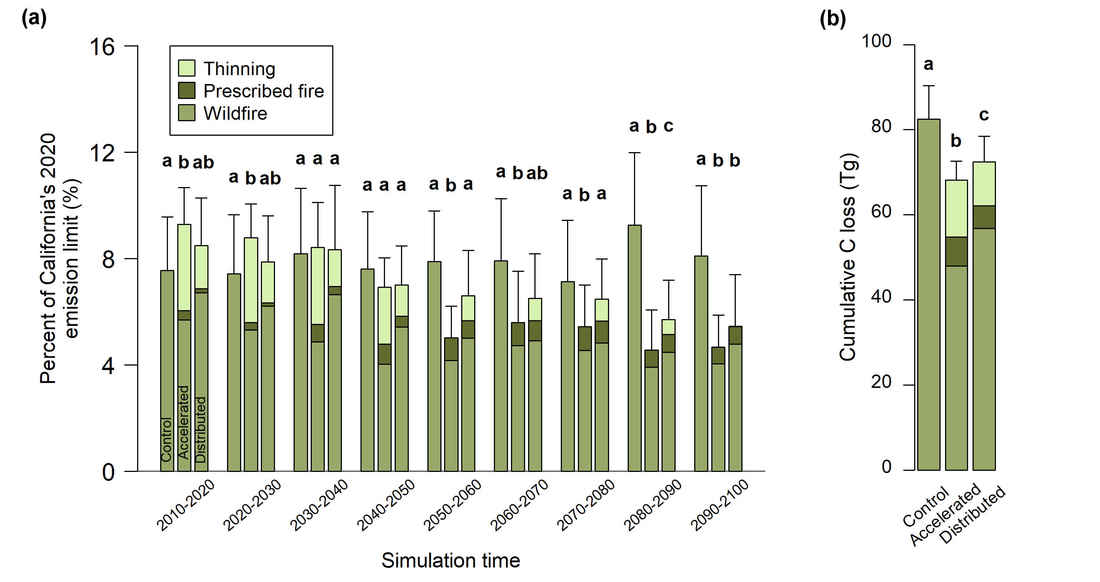|
The area burned by wildfire in the Sierra Nevada has increased by 274% over the last 40 years and the area impacted by stand-replacing fire has also increased. The forests in the Sierra Nevada are important for provision of clean water and are also part of the state’s climate action plan. As a result, figuring out how to reduce the chances of large, hot fires presents a large challenge. We know that the current pace and scale of forest treatments to reduce the risk of large, hot fires is inadequate given the scale of the problem and the area burned by wildfire is projected to increase with on-going climate change. In a recent study led by Shuang Liang, we set out to determine how the pace of large-scale treatment implementation would alter carbon storage across the Sierra Nevada. We ran simulations under projected climate and wildfire and two management scenarios. Both management scenarios included applying thinning and prescribed burning treatments to low and mid-elevation forests. These are forests that have been most impacted by fire suppression. In the distributed scenario, we simulated an equal portion of the area treated at each time-step and with full treatment implementation by the end of this century. In the accelerated scenario, we simulated the same treatments over the same area, but schedule the treatments so they were complete by 2050. We included a control scenario that assumed no active management for comparison. The area burned between all three scenarios was fairly consistent because we used the same fire size distributions in our simulations (black line in Figure 1). However, the proportion of burned area that was burned by stand-replacing fire (severity 4 and 5) decreased substantially. The faster pace of treatment under the accelerated scenario increased the proportion of area burned by surface fire (severity 1 and 2) and decreased the area burned by stand-replacing fire at a much faster rate than the distributed scenario. Both the accelerated and distributed treatments ended up storing more carbon than the control by 2100 (Shown by the difference in Figure 2). However, what was most striking was how these treatments influence the carbon balance of Sierra Nevada forests as a percentage of California’s 2020 emissions limit from the Governor’s Climate Action Plan. Initially, total carbon losses are higher in the treatment scenarios, with the accelerated treatment having the largest loss (Figure 3). However by 2030, carbon loss is similar amongst all three scenarios and by 2050 the accelerated scenario has lower emissions than the wildfire emissions under the control. As we demonstrated in a previous study, changing climate and the increase in area burned has the potential to increase wildfire emissions by 19-101% by later this century. The results from this study demonstrate that restoring surface fires to the low and mid-elevation forests in the Sierra Nevada can reduce the magnitude of future emissions and maintain a larger amount of carbon stored in these forests.
0 Comments
|
Details
Archives
October 2023
Categories
All
|




 RSS Feed
RSS Feed